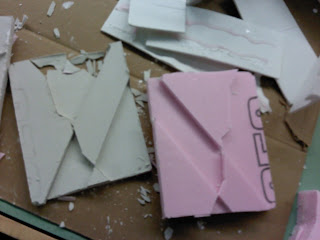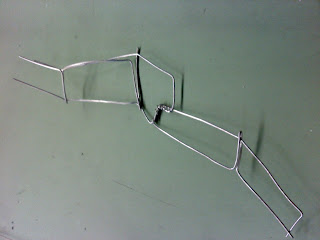Assignment 2
Map(in) Igualada
Map(in) Igualada
These are my first attempts at drawing without paper using plaster casting. As far as things go, it was semi-successful in determining the properties of plaster and what is too thin to remove from the cast easily. I only used simplified ideas for the initial designs. My next attempts will use slightly shallower lines in order to keep it more like a drawing and less like a model.
I really like the tactile qualities of the plaster. I had forgotten how cold it was, and how clean it can be cast, while I would appreciate some transparency in my design, I appreciate the feel of plaster over that of wax.

















































